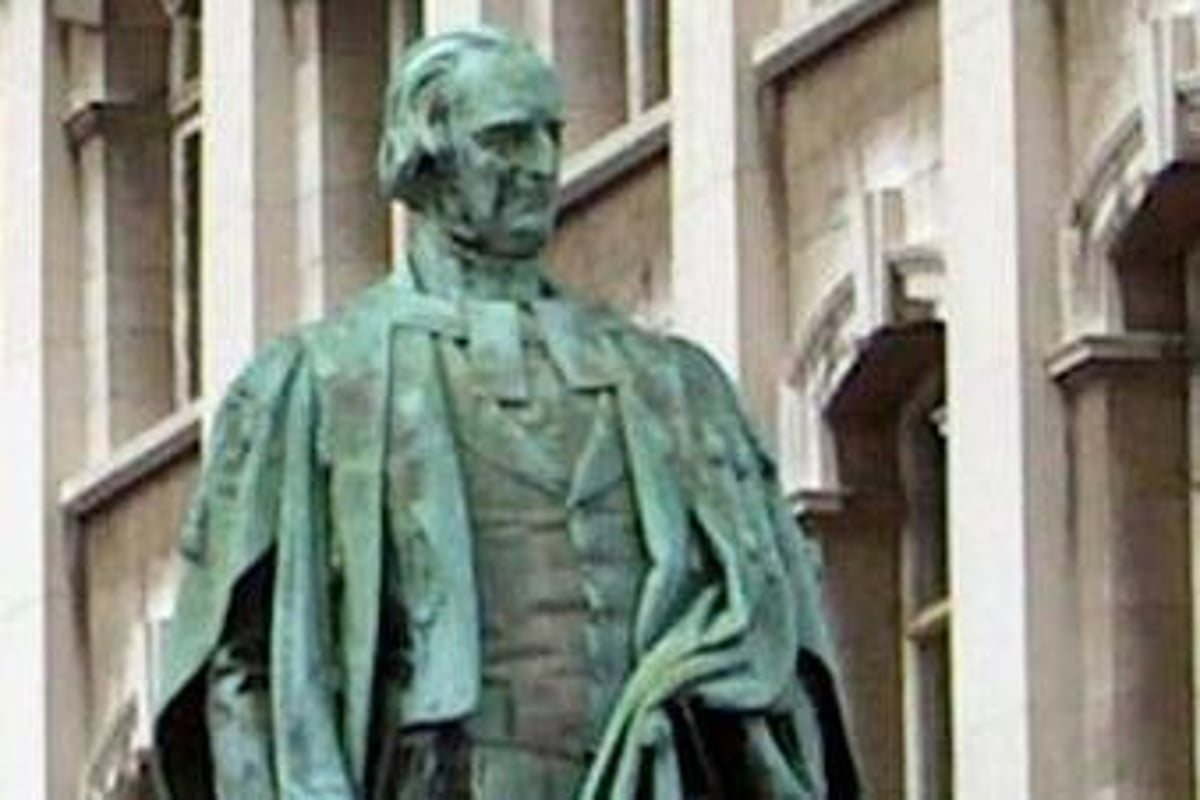Copyright newsletter

(The statue is often erroneously referred to as ‘the Black Man’ but that is reference to an earlier statue of the young Marquess of Belfast, which occupied the site. The statue of the Marquess of Belfast now resides in city hall.) The statue – probably symbolically – has its back turned on Royal Belfast Academical Institution which Cooke viewed with distaste as a hotbed of Arianism and theological liberalism. John Jamieson, the historian of the school, viewed Cooke’s political and religious legacy with abhorrence and responded in kind. Although Jamieson has suggested that Cooke was motivated by politics in his campaign against Arianism, Cooke actually seems to have been remarkably apolitical in the 1820s. Although he favoured a measure of ‘Catholic Emancipation’ in 1825, he did not actually approve of the 1829 legislation, possibly because the Tory government had effectively yielded to the threat of violence, if not civil war. Yet Cooke did not do anything to oppose ‘emancipation’ nor indeed did he ever choose to explain why he had changed his mind. By the early 1830s Cooke was much more exercised by political developments. He was concerned by Daniel O’Connell’s success in marshalling the political strength of the Roman Catholic community and his leadership of a phalanx of Irish MPs in alliance with the Whigs. More specifically, he was worried by the Church Temporalities Act of 1833 and the Tithe War of 1830-33. The former suppressed 10 of the then 22 Church of Ireland bishoprics and reduced the income of the surviving 12 sees. The Tithe War was a violent campaign in huge swathes of Leinster and Munster against the payment of tithes to the Church of Ireland as the established church. The campaign was openly supported by Bishop McHale of Killala (who became Archbishop of Tuam in 1834), Bishop Doyle of Kildare and Leighlin and many Roman Catholic priests. The campaign also enjoyed the support of local O’Connellite activists but O’Connell studiously remained aloof. Although as a Presbyterian, we might expect Cooke to be indifferent to the fate of the Church of Ireland, Cooke regarded these attacks on the Church of Ireland as part of a broader assault on Irish Protestantism as a whole. Cooke sought to counter these onslaughts with a pan-Protestant alliance and thus Cooke shared a platform with the 3rd Earl of Roden, an Orange Tory, and the 3rd Marquess of Downshire, Co Down’s largest landowner and a disillusioned Whig and ‘Emancipationist’, at the Hillsborough demonstration of October 30 1834. Between 30,000 and 40,000 people attended the event and stood in the cold for four-and-a-half hours. Cooke called for greater cooperation between the two main Protestant denominations: ‘a sacred marriage of Christian forbearance where they may differ, of Christian love where they agree, and of Christian cooperation in all matters where their common safety is concerned’. Cooke offered a definition of Conservatism which predated and anticipated Peel’s Tamworth manifesto of December 18 1834, the document which is widely held by historians to have laid down the principles upon which the modern British Conservative Party was founded. Cooke undertook to ‘protect no abuse that can be proved, to resist reckless innovation, not rational reform; to sacrifice no honest interest to hungry clamour, to yield no principle to time-serving expediency; to stand by religion in opposition to every form of infidelity’. Most Presbyterians at this stage were not favourably disposed to the Tory or Conservative Party and would not be so for another 50 years. Nevertheless, significantly there was no official Presbyterian repudiation of either Cooke’s presence at Hillsborough or his speech, beyond the moderator’s statement that he had not been representing the church. The impact of the Hillsborough demonstration at the time may have been rather more limited than Cooke would have wished but it was a portent of the future. In October 1867 Cooke joined the 4th Marquess of Downshire (the eldest son of the 3rd Marquess who had attended the first Hillsborough demonstration) and the Earl of Roden on a platform in Hillsborough, as he had done in 1834. Thirty-three years on, a frail Roden had to be carried on to the platform and Cooke’s speech opposing the disestablishment of the Church of Ireland could not be heard. Nor could his final speech to the Presbyterian general assembly in which he protested against Gladstone’s proposal to combine disestablishment of the Anglican Church in Ireland with the withdrawal of the Regium Donum from the Presbyterian Church. Cooke defended the Established Church as evidence of the state’s commitment to Protestantism and in the general election 1868 an ailing Cooke urged his co-religionists to vote Tory – against their natural inclination – to avert the disestablishment of the Church of Ireland. On the whole, his fellow Presbyterians largely disregarded his advice because Ulster Liberals had their best election for years. Yet, disestablishment of the Church of Ireland removed a major bone of contention between Anglicans and Presbyterians and thereby assisted the formation of the Unionist alliance in 1885-86. While Cooke anticipated the formation of the Unionist Party in the mid-1880s by publishing the banns of a marriage between the Church of Ireland and the Presbyterian Church at Hillsborough in October 1834, his vision was not realised in his own lifetime. A robust Liberal strand survived in Presbyterianism until the first Home Rule crisis of 1885-6. However, with Gladstone’s conversion to Home Rule Cooke’s pan-Protestant alliance became reality – less than 20 years after his death. Arguably, it was Gladstone’s conversion to Home Rule rather than Cooke which destroyed political liberalism among Ulster Presbyterians.



